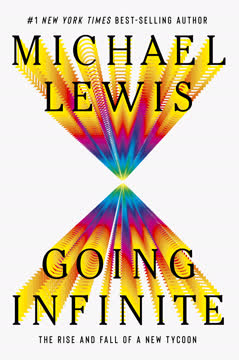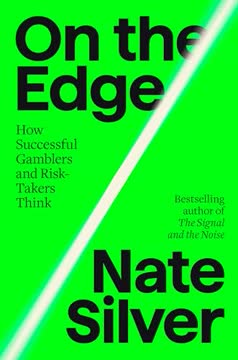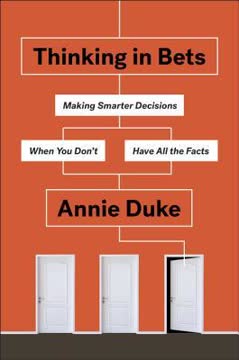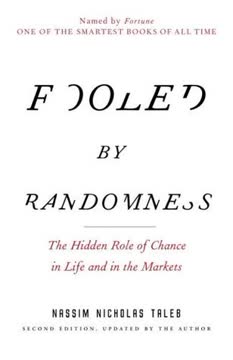Key Takeaways
1. Baseball analytics revolutionized team management and betting strategies
"Sabermetrics differs from the gathering of traditional baseball statistics as physics differs from accounting."
Data-driven decisions. The advent of sabermetrics, pioneered by Bill James, transformed how baseball teams evaluate players and make strategic decisions. This analytical approach uses advanced statistics to measure in-game activity, providing a more accurate picture of player and team performance than traditional stats like batting average or ERA.
Impact on betting. Sabermetrics also revolutionized baseball betting by providing bettors with more accurate predictive tools. By understanding advanced metrics like WAR (Wins Above Replacement), FIP (Fielding Independent Pitching), and wOBA (Weighted On-Base Average), bettors can identify undervalued players and teams, leading to more informed wagering decisions.
Cultural shift. The adoption of sabermetrics has led to a cultural shift in baseball, with teams increasingly relying on data analysts to inform personnel decisions and in-game strategies. This change has trickled down to fans and bettors, who now have access to a wealth of statistical information to inform their understanding of the game.
2. Cluster luck: Understanding random fluctuations in baseball performance
"If the 2011 Tampa Bay Rays got exactly the same overall offensive production from exactly the same players as they did in 2010, they'd score somewhere in the neighborhood of eighty fewer runs."
Definition and impact. Cluster luck refers to the random distribution of hits within a season that can significantly affect a team's run production. This concept explains why teams with similar offensive statistics can have vastly different run totals from year to year.
Predictive power. Understanding cluster luck is crucial for accurately projecting team performance. By stripping out the effects of cluster luck, analysts can better estimate a team's true talent level and make more accurate predictions for future performance.
Application in betting. Bettors who recognize the role of cluster luck can identify teams that are likely to regress or improve in the following season, potentially finding value in season-long win total bets or early-season game bets before oddsmakers adjust their lines.
3. Building a predictive model for baseball outcomes
"The model found an edge on twenty-nine of the thirty-eight playoff games. That represented 76 percent of the games, down from 86 percent during the regular season."
Key components. A successful baseball prediction model incorporates various factors:
- Player performance projections (e.g., PECOTA)
- Team-level statistics (e.g., Pythagorean win expectation)
- Adjustments for cluster luck
- Starting pitcher matchups
- Lineup changes and injuries
- Home field advantage
Continuous refinement. Models should be regularly updated with new data and adjusted based on performance. The author's model became more accurate as the season progressed, incorporating in-season performance data.
Limitations. Even the best models have limitations, especially in small sample sizes like the playoffs. It's crucial to understand these limitations and adjust betting strategies accordingly.
4. The power of PECOTA and SIERA in player evaluation
"SIERA is the most important sabermetric tool a baseball bettor possesses; it assesses repeatable skills, not random outcomes."
PECOTA's role. PECOTA (Player Empirical Comparison and Optimization Test Algorithm) is a powerful tool for projecting player performance. It uses historical data from comparable players to forecast future performance, accounting for factors like age, position, and past performance.
SIERA's importance. Skill-Interactive ERA (SIERA) is a more advanced pitching metric that better predicts future ERA than traditional stats or even FIP. It accounts for:
- Strikeout rate
- Walk rate
- Ground ball rate
- Interactions between these factors
Betting applications. Using PECOTA and SIERA can help bettors identify undervalued players and teams, particularly in player prop bets and early-season game bets before the market adjusts to true talent levels.
5. Applying Wall Street trading principles to sports betting
"If you answered 15 percent lumpy, you're more unique than you might think, and you're the perfect candidate for running a trading desk on Wall Street, managing a well-capitalized sportsbook, or searching for investments for Warren Buffett's Berkshire Hathaway."
Risk-reward balance. Successful sports betting, like Wall Street trading, requires a careful balance of risk and potential reward. This involves:
- Proper bankroll management
- Understanding variance and expected value
- Identifying and exploiting market inefficiencies
Emotional control. Both traders and bettors must learn to control their emotions, avoiding the temptation to chase losses or become overconfident after wins. Disciplined decision-making based on data and analysis is key.
Continuous learning. The most successful traders and bettors are those who continuously adapt to changing market conditions, refine their strategies, and learn from both successes and failures.
6. Risk management: The key to successful baseball wagering
"Never make a bet on one day that imperils your ability to exist the next day."
Bankroll management. Proper bankroll management is crucial for long-term success in sports betting. This involves:
- Setting aside a dedicated betting bankroll
- Limiting individual bet sizes to a small percentage of the total bankroll
- Adjusting bet sizes based on perceived edge and confidence level
Diversification. Like in financial investing, diversification in sports betting can help manage risk. This can involve:
- Betting on multiple games and bet types
- Using different sportsbooks to shop for the best lines
- Considering correlated parlays when appropriate
Long-term perspective. Successful bettors focus on long-term profitability rather than short-term results. This requires patience and the ability to weather inevitable losing streaks without deviating from a proven strategy.
7. The impact of sabermetrics on player valuation and team strategies
"Baseball teams, using the advances in statistical analytics developed via sabermetrics, identify skill sets. They know that it's the possession of specific skills that is the most reliable predictor of future results."
Skill-based evaluation. Sabermetrics has shifted player evaluation from results-based metrics to skill-based metrics. For example, focusing on a pitcher's strikeout rate, walk rate, and ground ball rate rather than just ERA.
Strategic shifts. This analytical approach has led to strategic changes in how teams:
- Construct their rosters
- Deploy players (e.g., defensive shifts)
- Make in-game decisions (e.g., bullpen usage)
Market inefficiencies. Teams that effectively use sabermetrics can identify undervalued players, leading to more efficient resource allocation and potential competitive advantages.
8. Exploiting market inefficiencies in baseball betting
"Oddsmakers may have adjusted to Arizona's better-than-expected performance as the year went on, but they never caught up to it."
Slow market adjustments. Betting markets often adjust slowly to new information or changes in team performance. This creates opportunities for informed bettors to find value, especially early in the season or when teams undergo significant changes.
Overreaction to recent results. Conversely, the market sometimes overreacts to recent performance, creating value on the other side. Understanding regression to the mean can help identify these opportunities.
Biases in public perception. Popular teams often receive disproportionate betting action, creating value on their opponents. Similarly, the public tends to overvalue recent performance and undervalue long-term trends.
9. The psychological aspects of baseball fandom and betting
"As baseball fans who have suffered excruciating defeats know, at some point, though, as the winter wears on, the crushing disappointment subsides, and even if they swore, shortly after the devastating loss that they'd never let themselves get that caught up in the fortunes of a baseball team, they'll start thinking about spring training."
Emotional investment. Baseball fandom often involves deep emotional investment, which can lead to irrational decision-making when betting. Recognizing and controlling these biases is crucial for successful wagering.
Confirmation bias. Fans and bettors tend to seek out information that confirms their existing beliefs about teams and players. Overcoming this bias requires actively seeking out contradictory information and remaining open to changing one's mind.
The thrill of the game. The excitement of baseball and betting can lead to impulsive decisions. Successful bettors learn to balance the enjoyment of the game with disciplined, analytical decision-making.
10. The future of sports betting: Lessons from Wall Street
"If casinos adopted Wall Street's prime brokerage model, that logistical nightmare could be eliminated."
Technological advancements. The future of sports betting will likely involve more sophisticated technology, including:
- Advanced analytics and machine learning models
- Real-time data integration
- Mobile and in-play betting platforms
Regulatory changes. As sports betting becomes legal in more jurisdictions, the industry will likely see increased regulation and standardization, potentially leading to more efficient markets.
Financial industry parallels. The sports betting industry may increasingly adopt practices from the financial sector, such as:
- Prime brokerage services for high-volume bettors
- More complex betting products (e.g., derivatives)
- Improved risk management tools for both bettors and bookmakers
Last updated:
FAQ
What's Trading Bases about?
- Intertwines Wall Street and Baseball: Trading Bases by Joe Peta explores the intersection of Wall Street trading strategies and baseball analytics, detailing how Peta applied sabermetric principles to sports betting.
- Personal Journey: The narrative follows Peta's personal experiences, including his recovery from a severe leg injury and his transition from Wall Street to betting on baseball.
- Statistical Analysis: The book emphasizes the importance of data analysis in making informed decisions, both in trading and betting, using various metrics and models to predict outcomes.
Why should I read Trading Bases?
- Unique Perspective: The book offers a fresh take on sports betting by integrating financial principles and statistical analysis, appealing to both sports fans and finance enthusiasts.
- Educational Value: Readers gain practical advice on building a betting model based on sabermetrics, enhancing their analytical thinking and understanding of real-world applications.
- Engaging Storytelling: Filled with personal anecdotes and humor, Peta's passion for baseball and trading shines through, making complex topics accessible and enjoyable.
What are the key takeaways of Trading Bases?
- Importance of Data: Successful betting relies heavily on data analysis and understanding player performance metrics, such as WAR and SIERA.
- Risk Management: Peta highlights the need for a systematic approach to capital allocation and the importance of not letting emotions dictate decisions.
- Market Inefficiencies: The book illustrates how to identify and exploit inefficiencies in betting markets, similar to finding mispriced stocks in trading.
How does Joe Peta create his betting model in Trading Bases?
- Data-Driven Approach: Peta builds his model using sabermetric principles, analyzing player performance data and team statistics to predict game outcomes.
- Pythagorean Theorem Application: He applies the Pythagorean theorem to estimate a team's winning percentage, adjusting for cluster luck to refine predictions.
- Continuous Improvement: Throughout the season, Peta adjusts his model based on actual game results, refining his predictions and betting strategies.
What is "cluster luck" in Trading Bases?
- Definition of Cluster Luck: Cluster luck refers to a situation where a team scores more runs than expected due to random occurrences rather than skill.
- Statistical Analysis: Peta quantifies cluster luck by comparing a team's actual runs scored to expected runs based on metrics like on-base percentage.
- Implications for Betting: Understanding cluster luck helps bettors make informed decisions, highlighting teams that may regress to their true performance levels.
How does Peta manage risk in his betting strategy in Trading Bases?
- Structured Betting Approach: Peta employs a systematic method for determining bet sizes based on the perceived edge of each game.
- Bet Sizing: He outlines a specific bet-sizing schedule that adjusts the amount wagered based on the model's confidence in each game.
- Focus on Capital Preservation: Peta emphasizes preserving capital to withstand losing streaks and maintain the ability to capitalize on future opportunities.
What role does sabermetrics play in Trading Bases?
- Foundation of the Model: Sabermetrics provides the analytical framework for Peta's betting model, enhancing the accuracy of his predictions.
- Identifying Value: By applying sabermetric principles, Peta can identify undervalued teams and players, giving him an edge over oddsmakers.
- Evolution of Baseball Analysis: The book illustrates how sabermetrics has transformed baseball analysis, influencing team management and betting strategies.
What is the significance of the Pythagorean theorem in Trading Bases?
- Win-Loss Prediction: Peta uses the Pythagorean theorem to estimate a team's expected win-loss record based on runs scored and allowed.
- Identifying Value: Comparing a team's actual performance to its expected performance helps find value in betting lines.
- Cluster Luck Analysis: The theorem aids in analyzing "cluster luck," allowing bettors to make more informed decisions about future performance.
How does Peta's personal story intertwine with the betting narrative in Trading Bases?
- Overcoming Adversity: Peta's recovery from a severe leg injury parallels his exploration of baseball and betting, adding depth to the narrative.
- Passion for Baseball: His love for baseball motivates him to create his betting model and engage with the sport on a deeper level.
- Connection with Family: Experiences with his daughters and their shared love for baseball highlight the intergenerational connections the sport fosters.
What are the challenges Peta faces while betting on baseball in Trading Bases?
- Market Adjustments: Oddsmakers adjusting lines based on team performance makes it harder to find value bets, requiring continuous model adaptation.
- Injury Impact: Injuries to key players can drastically affect team performance, complicating predictions and requiring strategy adjustments.
- Emotional Strain: The pressure of betting can create emotional challenges, emphasizing the importance of maintaining a disciplined mindset.
What are the best quotes from Trading Bases and what do they mean?
- “You see, you spend a good piece of your life gripping a baseball and in the end it turns out that it was the other way around all the time.”: Reflects Peta's deep connection with baseball and how it has shaped his life.
- “Every dollar counts.”: Underscores the importance of risk management and careful decision-making in both investing and betting.
- “Markets can remain irrational longer than you can remain solvent.”: Highlights the unpredictability of markets and the necessity of a sound strategy.
What is SIERA and why is it important in Trading Bases?
- Definition of SIERA: SIERA stands for Skill-Interactive Earned Run Average, evaluating a pitcher's performance based on strikeouts, walks, and ground-ball rates.
- Predictive Value: Peta uses SIERA to predict future performance, aiding in informed betting decisions.
- Integration into the Model: SIERA is incorporated into Peta's betting model, enhancing its accuracy and profitability.
Review Summary
Reviews of Trading Bases are generally positive, with readers praising Peta's blend of baseball analytics, Wall Street insights, and personal anecdotes. Many appreciate his explanations of sabermetrics and sports betting strategies, finding the book both educational and entertaining. Some readers particularly enjoy Peta's humor and storytelling ability. While a few found certain sections too technical or disjointed, most recommend the book to those interested in baseball, finance, or sports betting. Overall, readers appreciate Peta's unique perspective and engaging writing style.
Similar Books








Download PDF
Download EPUB
.epub digital book format is ideal for reading ebooks on phones, tablets, and e-readers.




